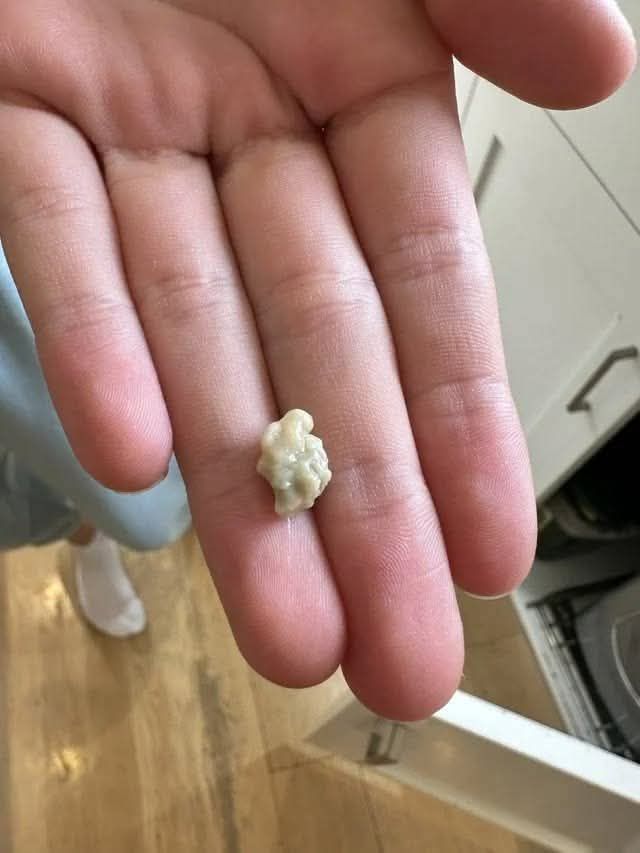
You might be experiencing tonsil stones (also called tonsilloliths) — small, harmless clumps that form in the crevices of your tonsils.
While they can be surprising (and sometimes smelly), they’re not dangerous — and more common than you think.
Let’s explore what tonsil stones really are, why they form, and how to manage them — so you can breathe easy (and fresh!) again.
What Are Tonsil Stones?
Tonsil stones are small, whitish or yellowish lumps that form in the pockets and folds of the tonsils — the fleshy tissues on either side of your throat.
They’re made of:
Trapped food particles
Dead white blood cells
Bacteria
Hardened saliva and mucus
Calcium and other minerals (which make them firm or chalky)
Over time, these materials calcify — creating a hard, crumbly lump that can range from pinpoint size to pea-sized.
✅ They’re not infections — but they can contribute to bad breath.
How Common Are Tonsil Stones?
About 10% of people experience them at some point — though some studies suggest the number could be higher
More common in people with large or deeply pitted tonsils
Often go unnoticed — many people don’t even know they have them
✅ They’re not a sign of poor hygiene — just anatomy and daily living.
Common Symptoms
Most tonsil stones are small and symptom-free — but larger ones can cause:
Bad breath (halitosis)
Strong, sulfur-like odor (like rotten eggs)
Sore throat or irritation
Scratchy or “something stuck” feeling
Difficulty swallowing
If stone is large
Ear pain
Referred pain from shared nerves
Visible white/yellow lumps
On or near the tonsils
✅ Most people only notice them when they see them in the mirror or cough them up.
What Causes Tonsil Stones?
Tonsil stones form when debris gets trapped in the tonsillar crypts (natural pockets in the tonsils) and hardens over time.
Risk Factors:
Large or deep tonsil crypts
Chronic tonsillitis or recurrent throat infections
Poor oral hygiene
Dry mouth (reduces natural cleaning from saliva)
Post-nasal drip (mucus feeds bacteria)
Large tonsils
✅ They’re not contagious — and not a sign of serious illness.
✅ How to Get Rid of Tonsil Stones
1. Gentle Removal at Home
Use a cotton swab, water flosser, or clean finger to gently push the stone out
Gargle with warm salt water to loosen it
Use a low-pressure oral irrigator (like a Waterpik)
⚠️ Don’t dig aggressively — you could injure your tonsils.
2. Prevent Them from Coming Back
Brush and floss daily
Reduces bacteria and food debris
Scrape your tongue
Removes bacteria that contribute to odor
Gargle after meals
Clears food from tonsil pockets
Stay hydrated
Saliva helps flush out debris
Use a mouthwash (alcohol-free)
Helps reduce bacteria without drying mouth
When to See a Doctor
Most tonsil stones go away on their own — but see an ENT (ear, nose, and throat doctor) if you have:
Frequent or recurring stones
Large stones that won’t budge
Persistent bad breath despite good hygiene
Pain, swelling, or signs of infection
Trouble swallowing or breathing
Treatment options include:
Professional removal
Laser cryptolysis (smoothing tonsil pockets)
Tonsillectomy (removal of tonsils) — only for severe, chronic cases
❌ Debunking the Myths
❌ “Tonsil stones are rare”
No — they’re common and often go unnoticed
❌ “They mean you’re dirty”
No — even people with great hygiene get them
❌ “They’re contagious”
No — they form from your own mouth’s environment
❌ “They’re dangerous”
No — they’re usually harmless
Final Thoughts
Finding a white lump in your throat can be unsettling — but in most cases, it’s just a tonsil stone, not a health crisis.
They’re a normal part of life for many people — especially those with deeper tonsil folds.
So if you’ve been battling bad breath or that “something stuck” feeling…
check your tonsils.
And if you find a stony little surprise?
Don’t panic.
Remove it gently.
Improve your oral hygiene.
And know this:
You’re not alone — and it’s not your fault.
Because sometimes, the weirdest things in your body are just weird — not worrisome.